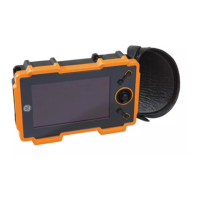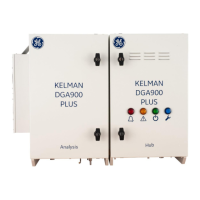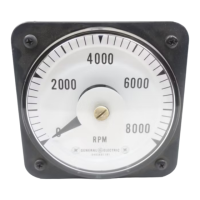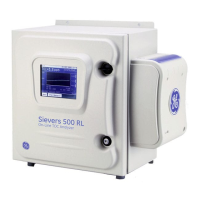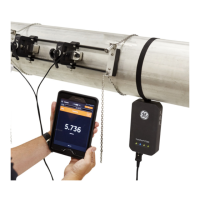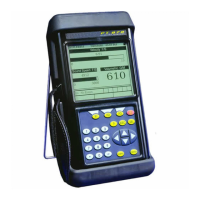Krautkramer USM 35X Issue 01, 04/2005 5-81
OperationEvaluation according to the DGS method (only USM 35X S)
Locks, error messages
As long as a valid reference echo is stored, no func-
tions can be changed which could cause an incorrect
DGS evaluation. If an attempt is made to change such
a function, the corresponding error message will appear,
e.g.
“P-DELAY locked by DGS-REF = on”
The DGS evaluation must likewise be switched off and
the reference echo deleted in the case of selecting a
new probe, e.g. for a new test application.
Validity of the DGS method
Echo amplitude evaluations according to the DGS
method are only reliable and reproducible in cases
when:
• The reference echo is received from the test object if
possible. If this is not possible, it should be ensured
that the reference block is made of the same materi-
al as the test object.
• The evaluation is carried out using the same probe
which was also used for recording the reference
echo. Another probe of the same type can be used
after recording a new reference echo.
• Echo amplitudes for reflector distances smaller than
half of the probe’s near-field length are subject to
heavy variation – for physical reasons due to interfer-
ence phenomena effecting the area. Thus, evaluation
results may fluctuate more as the usually permissi-
ble ±2 dB. An evaluation according to the DGS
method is possible but not recommended for this
cases.
Krautkramer USM 35X Issue 01, 04/2005 5-81
OperationEvaluation according to the DGS method (only USM 35X S)
Locks, error messages
As long as a valid reference echo is stored, no func-
tions can be changed which could cause an incorrect
DGS evaluation. If an attempt is made to change such
a function, the corresponding error message will appear,
e.g.
“P-DELAY locked by DGS-REF = on”
The DGS evaluation must likewise be switched off and
the reference echo deleted in the case of selecting a
new probe, e.g. for a new test application.
Validity of the DGS method
Echo amplitude evaluations according to the DGS
method are only reliable and reproducible in cases
when:
• The reference echo is received from the test object if
possible. If this is not possible, it should be ensured
that the reference block is made of the same materi-
al as the test object.
• The evaluation is carried out using the same probe
which was also used for recording the reference
echo. Another probe of the same type can be used
after recording a new reference echo.
• Echo amplitudes for reflector distances smaller than
half of the probe’s near-field length are subject to
heavy variation – for physical reasons due to interfer-
ence phenomena effecting the area. Thus, evaluation
results may fluctuate more as the usually permissi-
ble ±2 dB. An evaluation according to the DGS
method is possible but not recommended for this
cases.
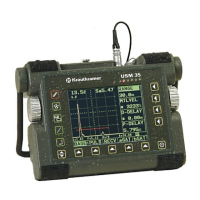
